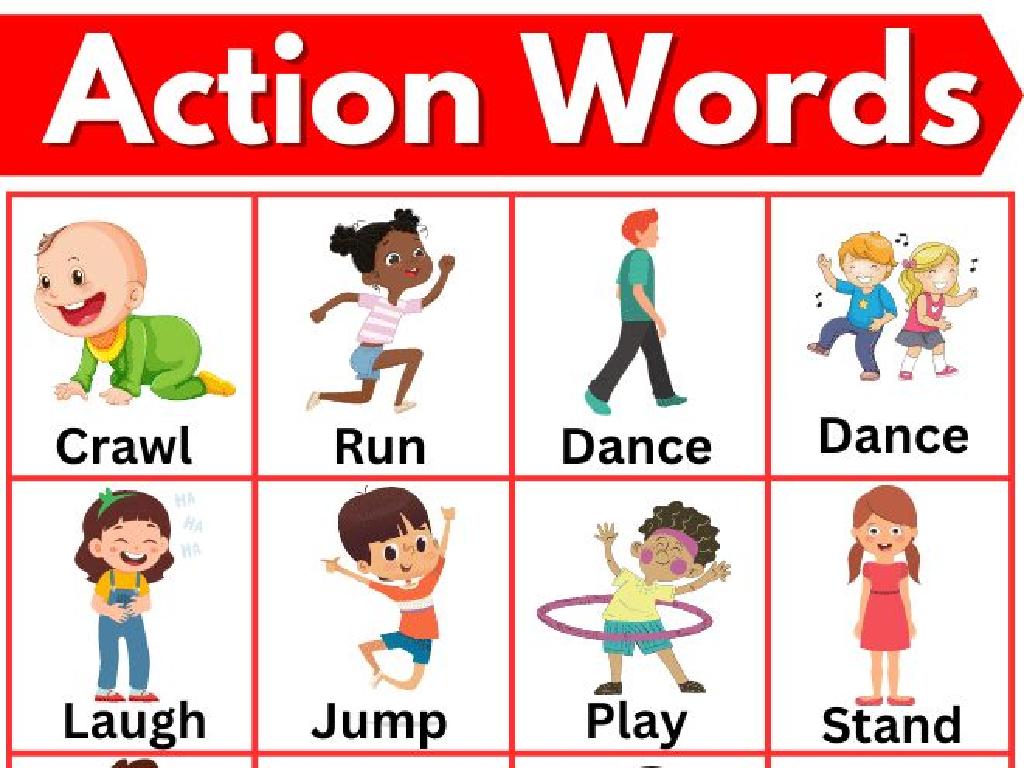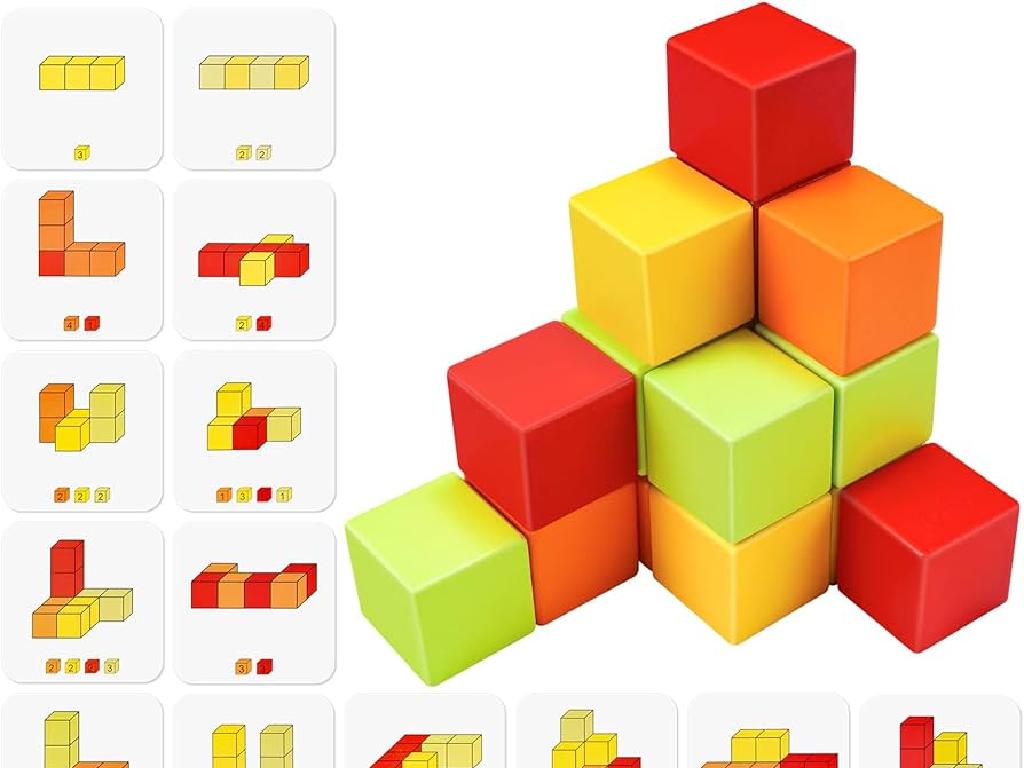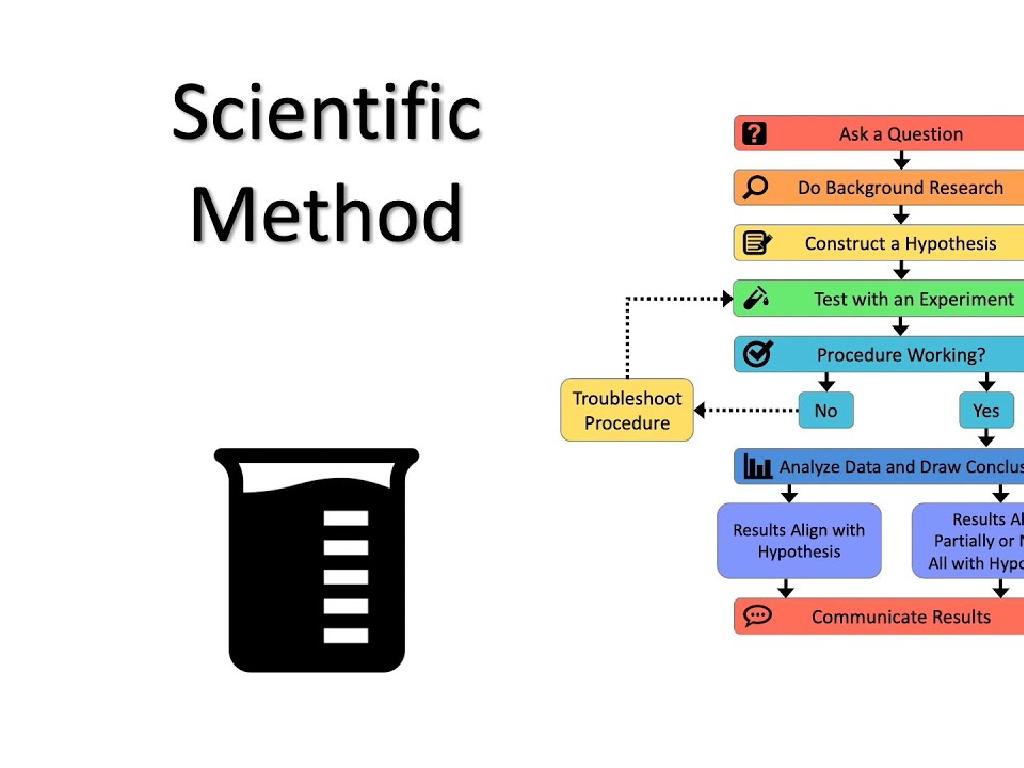Abbreviate Force, Energy, And Electricity Units
Subject: Science
Grade: Seventh grade
Topic: Units And Measurement
Please LOG IN to download the presentation. Access is available to registered users only.
View More Content
Abbreviating Units in Science
– Importance of units in science
Units are essential for precise scientific communication.
– Force, energy, and electricity
Force is measured in newtons (N), energy in joules (J), and electricity in volts (V) or amperes (A).
– Abbreviations for units
Abbreviations like N, J, V, and A save time and space in scientific discussions and writings.
– Standardization in science
Using standard abbreviations helps scientists worldwide understand and share data effectively.
|
This slide introduces the concept of units and their abbreviations in the context of science, emphasizing their role in ensuring clarity and precision in communication. Students will learn about the specific units used to measure force, energy, and electricity, and the rationale behind using standardized abbreviations. Highlight the importance of these conventions in facilitating international collaboration and data sharing among scientists. Encourage students to become familiar with these abbreviations as they will frequently encounter them in their scientific studies and future explorations.
Standard Units of Measurement in Science
– Introduction to SI Units
– SI stands for International System of Units, used globally
– Explore the seven base SI units
– Base units include meter (m), kilogram (kg), second (s), etc.
– Derived units from base SI units
– Units like Newton (N) for force are derived from base units
– Importance in scientific communication
|
This slide introduces the International System of Units (SI), which is the standard for measurement in science worldwide. Emphasize the importance of a universal system for consistency and communication in science. The seven base SI units are the foundation for all other units and include the meter for length, kilogram for mass, second for time, among others. Derived units, such as the Newton for force, are combinations of these base units and are crucial for measuring more complex concepts like force, energy, and electricity. Encourage students to understand how these units are applied in real-world scientific scenarios and to practice converting between them.
Measuring Force: Understanding Newtons
– Definition of force
– Force is a push or pull on an object
– Unit of force: Newton (N)
– One Newton (N) is the force needed to accelerate 1 kg at 1 m/s²
– Measuring force with a Newton meter
– A device that measures the force applied to it
– Everyday examples of force
– Opening doors, kicking a ball, magnets pulling or pushing
|
This slide introduces the concept of force and its measurement in Newtons, which is a fundamental unit in physics. Start by explaining force as an interaction that causes an object to move, stop, or change direction. Clarify that the Newton is the standard unit for measuring force, named after Sir Isaac Newton. Demonstrate how a Newton meter, also known as a force meter, works by showing its use in measuring the force applied to it. Provide relatable examples such as opening doors, kicking a ball, or the force between magnets to help students connect the concept of force to their daily experiences. Encourage students to think of other examples where they apply force in their lives.
Measuring Energy: Understanding Joules
– Energy defined and its unit
– Energy is the capacity to do work, measured in Joules (J).
– Various forms of energy
– Kinetic (motion), potential (stored), thermal (heat), and more.
– Measuring energy in Joules
– How much energy is in a lightning bolt or a snack?
– Real-world energy examples
|
This slide introduces the concept of energy in the context of science for seventh graders. Begin by defining energy as the ability to do work or cause change and explain that the standard unit of energy is the Joule (J). Discuss different forms of energy, such as kinetic energy (energy of motion), potential energy (stored energy), and thermal energy (heat energy), to give students a broad understanding of the concept. Provide real-world examples to illustrate how energy is measured in Joules, such as the energy released by a lightning bolt or the amount of energy in a granola bar. Encourage students to think of other examples and how energy impacts daily life. This will help them relate the abstract concept of energy to tangible experiences.
Measuring Electricity: Understanding Units
– Definition of electricity
– Electricity is the flow of electrical power or charge.
– Units: Watt (W) and Kilowatt-hour (kWh)
– Watt is the unit of power; kWh measures energy used over time.
– Power, voltage, and current relationship
– Power (Watts) = Voltage (Volts) x Current (Amperes).
– Measuring home electricity usage
– Electricity meters track kWh used in households.
|
This slide aims to introduce students to the basic concepts of electricity and its measurement. Start by defining electricity as the movement of electrons that creates charge, which we harness for work. Explain that the watt is the basic unit of power, representing the rate of energy transfer. One kilowatt-hour is the energy used when a 1,000-watt appliance runs for an hour. Discuss the formula for power and how it relates voltage and current, two fundamental electrical properties. Finally, describe how electricity usage is measured in homes using meters that record the kilowatt-hours consumed, which is reflected in the household’s electricity bill. Encourage students to look at their home electricity bills to see the total kWh used and discuss ways to conserve electricity.
Abbreviating Units of Force, Energy, and Electricity
– Abbreviations: N, J, W, kWh
– Newton (N), Joule (J), Watt (W), Kilowatt-hour (kWh) are units for force, energy, and power.
– Utility of abbreviations
– Abbreviations save time, avoid errors, and are internationally recognized.
– Practice writing abbreviations
– Write each unit’s full name and abbreviation several times for memorization.
– Recognizing units in context
– Identify units in real-life examples like electric bills (kWh) and science problems.
|
This slide introduces students to the common abbreviations for units of measurement in physics: Newton for force, Joule for energy, Watt for power, and Kilowatt-hour for electrical energy consumption. Emphasize the importance of abbreviations in scientific communication and everyday life, such as in understanding energy consumption on electric bills. Encourage students to practice writing these abbreviations to aid memorization and recognition. Provide exercises where students match the abbreviation to its unit and use them in context, reinforcing their understanding and ability to apply these abbreviations in practical situations.
Class Activity: Mastering Unit Conversions
– Convert units of force
– Use conversion factors, e.g., 1 kN = 1000 N
– Change energy units
– For energy, e.g., 1 kJ = 1000 J
– Switch electricity units
– Convert electrical units, e.g., mA to A
– Solve conversion problems
– Apply conversions to real-life scenarios
|
This activity is designed to help students understand and practice converting different units of force, energy, and electricity. Provide students with conversion factors such as 1 kN (kilonewton) equals 1000 N (newtons), and 1 kJ (kilojoule) equals 1000 J (joules). Divide the class into small groups and give each group a set of real-world problems that require unit conversions to solve. For example, converting the energy consumption of a light bulb from joules to kilojoules, or the force needed to move an object from newtons to kilonewtons. This hands-on activity will reinforce their understanding of measurement units in a practical context. Encourage collaboration and ensure each group understands the conversion process before starting.
Conclusion: Units in Science
– Importance of units in science
– Abbreviations for force, energy, electricity
– Force (N), Energy (J), Electricity (A, V, W)
– Engage in Q&A session
– Ask questions about today’s lesson
– Recap and clarify doubts
– Review key points and answer questions
|
This slide aims to consolidate the students’ understanding of the importance of units in scientific measurement. It’s crucial for students to recognize that units like Newton (N) for force, Joule (J) for energy, and Ampere (A), Volt (V), and Watt (W) for electricity are fundamental in accurately communicating scientific concepts. The Q&A session is an opportunity for students to address any uncertainties and for teachers to assess comprehension. Encourage students to ask questions and participate actively. The teacher should prepare to revisit any topic that seems to have caused confusion and ensure that students leave the class with a clear understanding of the abbreviations and their significance in the context of science.
Homework: Units of Force, Energy, and Electricity
– Create a units reference sheet
– List common units like Newton (N), Joule (J), and Watt (W) with their abbreviations.
– Practice unit conversion problems
– Convert between units, e.g., kilowatts to watts.
– Identify real-life measurement examples
– Find instances where you encounter these units, like electricity bills (kWh), battery capacity (mAh), or weighing scales (N).
– Understand practical applications
|
This homework assignment is designed to reinforce the students’ understanding of the units of force, energy, and electricity. They will create a reference sheet that will serve as a study aid, listing the units such as Newton for force, Joule for energy, and Watt for electricity, along with their standard abbreviations. Students will also solve conversion problems to gain practical skills in manipulating these units, which is essential for scientific calculations. Additionally, they are tasked with identifying examples from everyday life where these measurements are used, such as on electricity bills (kilowatt-hours) or in describing the energy storage of batteries (milliamp-hours). This will help them see the relevance of what they learn in class to the real world. The teacher should provide a variety of conversion problems and encourage students to share interesting examples they find at home or in their community.





